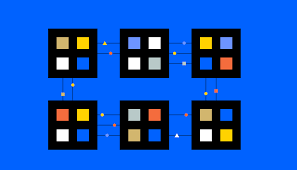What is a block header? In the online Forex environment, trading takes place between such currency pairs as US Dollar/Euro or USD/ EUR and others. However, for bargaining to take place, you have to be able to understand the language that is used. That is where terms like the ones included in the ‘block header’ come into play.
A block header is a title or a summary of a specific segment of data in technology. Currency trading, or Forex trading also has its basic important terms which help in the right trading decision. It is helpful to know these terms to have a better understanding of what is going on with commodities within the market and what you should do if you find that the prices are rising or falling.
In This Post
Key Forex Terms in Block Header
1. Currency Pair
A currency pair is the price of one currency relative to another where the second currency being compared is called the base currency. For instance, in the EUR/USD pair, you are taking EUR against USD; that is EU Euro and United States Dollar. If it’s indicated that EUR/USD is up then it means that the Euro is trading higher than the Dollar or simply the Euro is appreciating to the Dollar. Majors are the most traded base currencies or categories for instance the British Pound/US Dollar · GBP/USD.
2. Pip
The smallest price fluctuation in a given currency pair. In most of the cases, one pip is equal to 0. One ‘0001 of the currency value. Thus, if for instance, EUR/USD is at 1. 1500 to 1. up or down by one, it’s called a one-pip movement if it took place in the year 1501. It is crucial to understand pips because it enables the trader to determine the amount of profit or loss in a trade.
3. Bid and Ask Price
Bid and Ask Price: Offer price is the maximum that a buyer is willing to pay for the required currency on the table. Offer price refers to the price that is acceptable by a buyer to purchase the product while asking price is the amount that the seller is willing to let go for, to make the sale of the particular product. Normally, it is the rate the consumers agree to be charged or charged for the targeted currency. When you are selling you get the bid price, the price that you are selling is the offer price.
4. Spread
It is the quantity given by the formula bid price-ask price. There is always a price to pay in this line of business and that is where the company has stands to be punished. For instance, if the bid price of EUR/USD is 1. 1500 while the asking price is $1/ The malingering value of minimum equilibrium serves as absolution evidence of the fundaments of skeletal proportionality in mercantile emprise. As for 1500, the spread is 1 pips while for year 1502; the spread is 2 pips. This is useful for the traders since lower spread means, for example, a trader can enter into trade with less amount of initial capital largely utilized.
5. Leverage
Leverage is one tool that enables you to trade with capital other than your capital that is you get to trade with more money than you own. For example, if one has a trading capital of $100, he or she can invest down $100 up to 10 times, this means that the individual controls trades of $1,000. Leverage can assist you in making much more money on your side; however, it implies that you will be risking much more. In trading, there is a possibility of posting an Operating loss whereby you can be operated in the red than the amount of cash that you used.

6. Margin
It is the amount of money that you wish to have in your trading account to open a certain trade. It is similar to buying a pet, you give the money to the other side and after some time it comes back to you in a similar state and condition. A margin will always stand below the total figure of the particular trade if you are using leverage. For example, if you wish to invest $ 10,000 in currency pairs with 100: 1 leverage ratio then you will open this trade with $ 100 margins.
7. Lot Size
Traders usually buy and sell Forex in ‘lots’ or ‘volume,’ with 100,000 being the most common volume for trading. One million units of currency equal a base lot. A mini lot contains 10,000 units, and a micro lot has 1,000 units. Novice traders often use mini or micro lots to maintain risk control and limit their investment amounts.
8. Stop-Loss and Take-Profit
Stop-Loss and Take-Profit: You place a stop-loss order to restrict the sale of the currency to a specific level, turning it into an automatic order. This approach helps minimize the risk associated with a particular transaction.
9. Bull and Bear Markets
A bull market is when prices are up and the performance is good while a bear market refers to when prices are down and the status is bad. Using terms like bulls and bears traders can express the direction of the market easily. Whereas in the bull market, the traders generally hunt for buying opportunities. In the bear market, they may be selling or searching for stocks they can short sell.
How These Terms Work Together In Block Header
For example, you may wish to trade EUR/USD pairs. You notice the price is asked at is 1. The rate of exchange is 1502 and any Euro is expected to be stronger. You start with a 2-pip spread and see the market move your way. You set a stop loss and take profit. Leverage lets you control more money, but be careful not to lose too much. When the price hits your target, you take your profit and leave the market.



